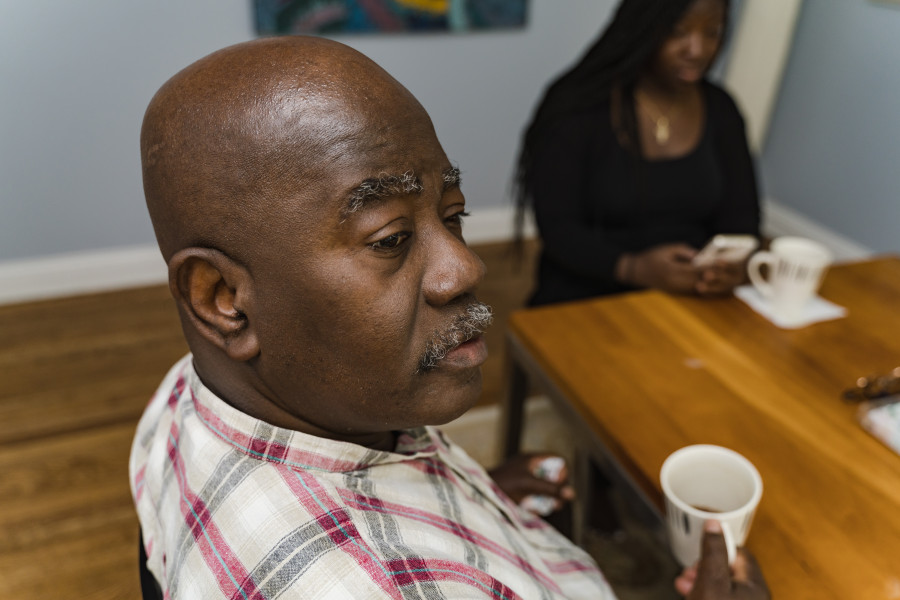It is the leading cause of disability among older adults. Other dementias, including Alzheimer’s Disease, are the 7th leading causes of death globally. In Canada, though statistics vary, it is estimated that more than 400,000 older adults- ages 65 and older- are living with dementia, with about 76,000 new cases being diagnosed each year.
Although dementia is most prevalent amongst older adults, this syndrome alongside other neurodegenerative disorders, may also occur in people under 65 years old, also known as young or early-onset dementia. This article will focus on Alzheimer’s Disease amongst older adults over 65 years old since it is the most common dementia affecting this population.
What is Alzheimer’s Disease?
The medical term dementia derives from the Latin term de mens or de mentis meaning “out of mind”. It is a syndrome referring to the decline in mental functioning, particularly cognition. Alzheimer’s is a part of the family of neurodegenerative diseases, which are diseases resulting in the loss of neurons and is one of several neurological disorders known to cause dementia.
German psychiatrist and neuropathologist, Dr. Alois Alzheimer, was the first to formally recognize this specific brain disorder in 1906. Liberian psychiatrist Dr. Solomon Fuller, who was the United States’ first Black psychiatrist, was responsible for being the first to translate Dr. Alzheimer’s case into English, and publishing the first comprehensive review on Alzheimer’s in 1912.
A primary sign and symptom of Alzheimer’s disease is memory deficits. Though memory impairments are a natural part of aging, when these memory deficits begin to worsen and affect recollection of every day learned activities or memories like creating grocery lists or remembering birthdays, Alzheimer’s may be present.
Not all memories are equally impacted. Various studies investigating autobiographical memories- the ability to vividly recall specific past events in one’s life- in individuals with Alzheimer’s suggest that these older adults typically retain more childhood and young adulthood memories, also known as the “reminiscence bump”, than memories from the recent past. This may explain why our elders who may be living with Alzheimer’s, particularly those who emigrated to Canada in their adolescent or adulthood years, may feel comfort recollecting the few retained nostalgic memories of back home. Arguably, they may even thrive back home despite the disease, considering the level of social and cultural familiarity.
Alzheimer’s disease progressively worsens over time. While the specific number of stages varies, the progression will be summed up as follows: Early, Mid, and Advanced.
Early stage
The degeneration associated with Alzheimer’s typically begins before signs and symptoms become apparent. Early neurological changes can only be recognized through imaging testing such as Positron Emission Tomography (PET) scans. As the disease becomes more noticeable, individuals may observe mild cognitive changes such as:
- Poor judgement such as crossing the street without looking out for traffic
- Increased confusion about where they are
- Difficulties completing familiar tasks like cooking or driving
- Memory impairments such as misplacing items
- Language problems such as struggling to communicate the right word, also known as aphasia
- Increased social withdrawal due to symptoms becoming more visible
Mid Stage
In the mid-stage, the disease symptoms become more evident and begin to interfere with daily living. Some of these signs include:
- Persistent mood changes including depression, irritability and anxiety
- Forgetting aspects of personal history
- Forgetting personal information like telephone numbers or addresses
- Becoming more disoriented such as not recognizing when they are home or asking to see a friend or family member who died years ago
Sundown syndrome, often referred to as “sundowning” is frequently associated with Alzheimer’s and other dementias. It is a clinical term describing various psychiatric symptoms an individual exhibits usually later in the afternoon or evening i.e., when the sun goes “down” including:
- Hallucinations
- Delusions
- Agitation and restlessness such as pacing
- Anxiety
Sundowning often becomes more pronounced during the mid-stage, though it can happen at any stage. Sundowning is noted to have various factors influencing or worsening its development including circadian rhythm disorders, environmental determinants such as the amount of exposure to sunlight and certain medications.
Advanced Stage
By the advanced stage, some individuals may require major assistance in their activities of daily living (ADL’s) including eating and toileting. Mobility may also become compromised in the advanced stage, though not always. They often experience more severe communication difficulties such as “word salads” formally recognized as Wernicke’s aphasia- the process of producing speech that involves random words placed in a sentence- thus making their speech difficult to understand.
Alzheimer’s is a fatal disease, though different scientists debate whether Alzheimer’s is the underlying cause. Instead, more discussion surrounds how the complications resulting from brain deterioration, in combination with their older age make these individuals more susceptible to secondary illnesses such as strokes and heart attacks. One of the most common causes of death for those with Alzheimer’s is aspiration pneumonia- the process of inhaling food particles into the lungs through the trachea rather than the esophagus, thus causing lung infection. The risk of experiencing this complication is increased when the individual has dysphagia- the medical term for swallowing problems- a common disorder amongst older adults, especially those with Alzheimer’s.
What causes Alzheimer’s Disease?
Though the exact cause of Alzheimer’s is not yet discovered, its etiology involves a variety of different biological, genetic, and psychosocial factors. Some of the factors increasing the risk of developing Alzheimer’s and other dementias include:
- Older age
- Female sex
- Cardiovascular diseases
- Sedentary lifestyle
- Poor lifestyle habits (poor nutrition, smoking and excessive drinking)
- Social isolation
The challenges of Alzheimer’s in the Black community
Black people of African descent have the highest level of genetic and phenotype variation in the world. Such variation influences our peoples’ response to, metabolism and absorption of drugs in the body. Yet, Black populations globally, including in Canada, remain underrepresented in research on Alzheimer’s including its clinical trials for drug treatments and genetic studies, since most of the studies focus on European populations.
From Africa, the Caribbean and Latin America to Canada, Alzheimer’s and other dementias are of growing concern for Black people. Concurrently, the stress on Black caregivers caring for individuals with the disease is burdensome, especially when exacerbated by experiencing other economic and psychosocial stressors like financial stress and racism respectively. Culturally, we believe in caring for our elders at home/in the community. Additionally, most long-term care homes were established for and by White people of European descent to reflect their beliefs, values, and cultural norms. Naturally, such a foundation increases the risk of social and cultural isolation for our elders.
Treatment for Alzheimer’s Disease
There remains no cure for Alzheimer’s. Certain medications are prescribed to treat some of the neurological damage like cognitive decline. Different forms of psychotropic medication are often prescribed to treat the psychiatric symptoms of the disease such as mood changes and psychotic behaviour, though some studies caution its use suggesting it may increase the risk of faster cognitive decline.
Nonetheless, there are other ways to improve your loved one’s quality of life. The following are some examples:
- Comfort them when they are experiencing delusions, hallucinations and paranoia since these experiences may be very real for them; rather than challenging them, which may generate conflict, go along with them and even find ways to distract them such as subtly changing the topic or asking if you both can move to another location
- As their disease advances, ask one question at a time and use more direct language requiring more “yes or no” answers
- Keep them integrated in the family by including them in activities and outings
Simultaneously, despite genetic predispositions making some of our people susceptible to developing the disease, we must be preventative by recognizing the protective and modifiable factors that can help decrease our risks of experiencing neurodegenerative diseases like Alzheimer’s. These include:
- Strong social networks
- High levels of education
- Physical activity and active lifestyles
- Good nutrition
- Mentally stimulating activities
Our elders are vital to our community. As our population ages, we must be intentional in elevating their health and well-being, with social integration being a primary objective.

 By
By 





